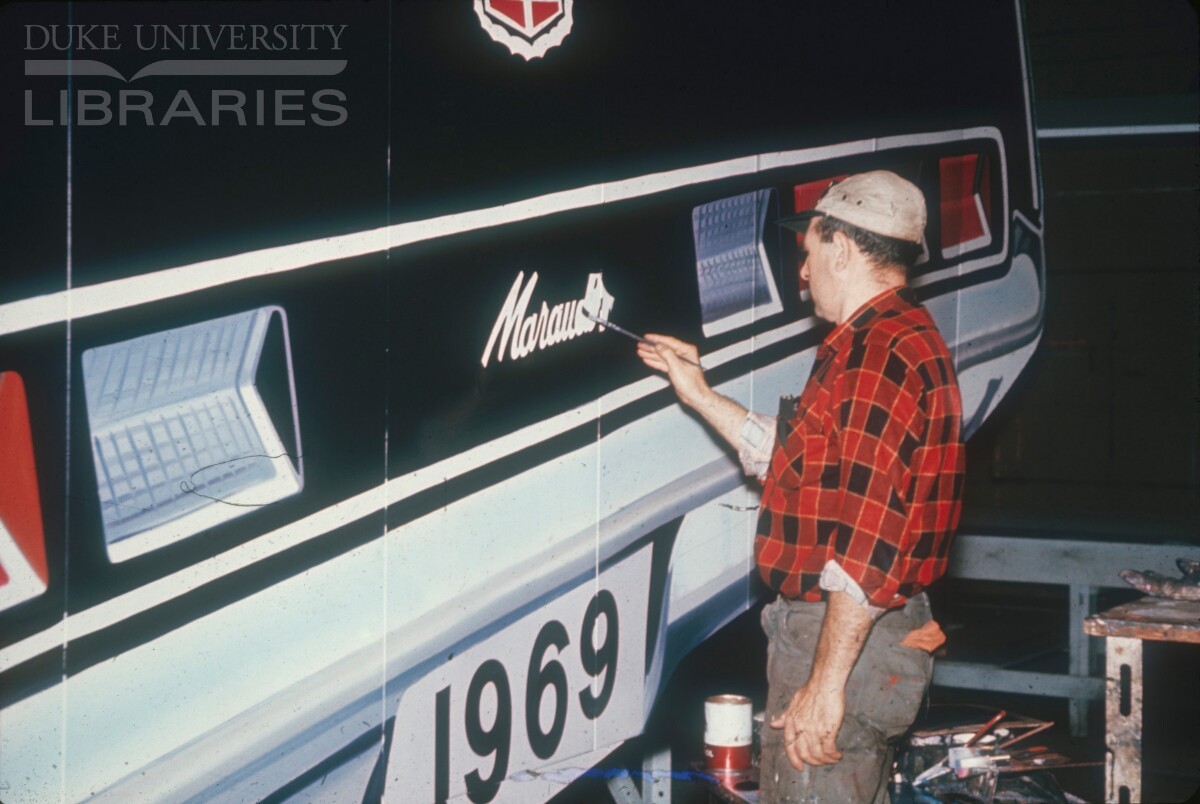
The Hand-Painted Legacy of Billboard Advertising
Katie Cordrey, August 26th, 2024
Before the age of AI design and the room-sized large-format printers that produce printed vinyl wraps used in outdoor advertising today, specialized artists hand-painted billboard ads one at a time. This art form required high skill and creativity, as artists had to paint large advertisements directly onto transportable panels, billboard structures, or walls. Meadow Outdoor Advertising hand-painted many of its designs into the early twenty-first century. Billboard artists worked both in workshops and on-site.
Sign painters began by creating a detailed, to-scale sketch or design as a blueprint for the final artwork. They transferred the design onto the billboard surface using a grid system, pounce patterns, or by projecting the image onto the surface and tracing it. Here, a 1970s painter selects paint colors for a billboard based on the artist’s design.
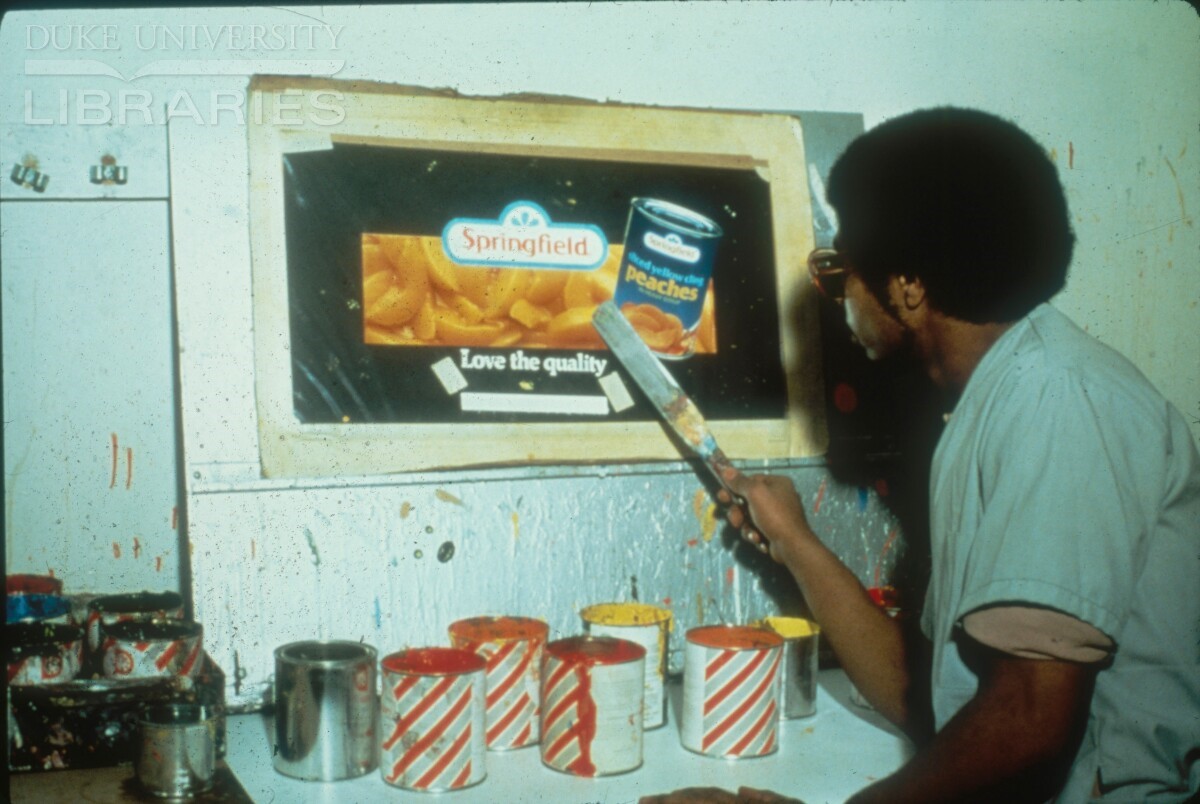 Once the outline was in place, painters used a variety of brushes and paints to fill in the design. They often worked from top to bottom to avoid smudging their work. The process required artistic skill and physical endurance, as painters had to work on scaffolding or ladders, sometimes in challenging weather conditions. The painters in the following images were painting billboard panels inside a billboard production plant in 1969. Once complete, the panels were disassembled, transported, and reassembled on-site.
Once the outline was in place, painters used a variety of brushes and paints to fill in the design. They often worked from top to bottom to avoid smudging their work. The process required artistic skill and physical endurance, as painters had to work on scaffolding or ladders, sometimes in challenging weather conditions. The painters in the following images were painting billboard panels inside a billboard production plant in 1969. Once complete, the panels were disassembled, transported, and reassembled on-site.
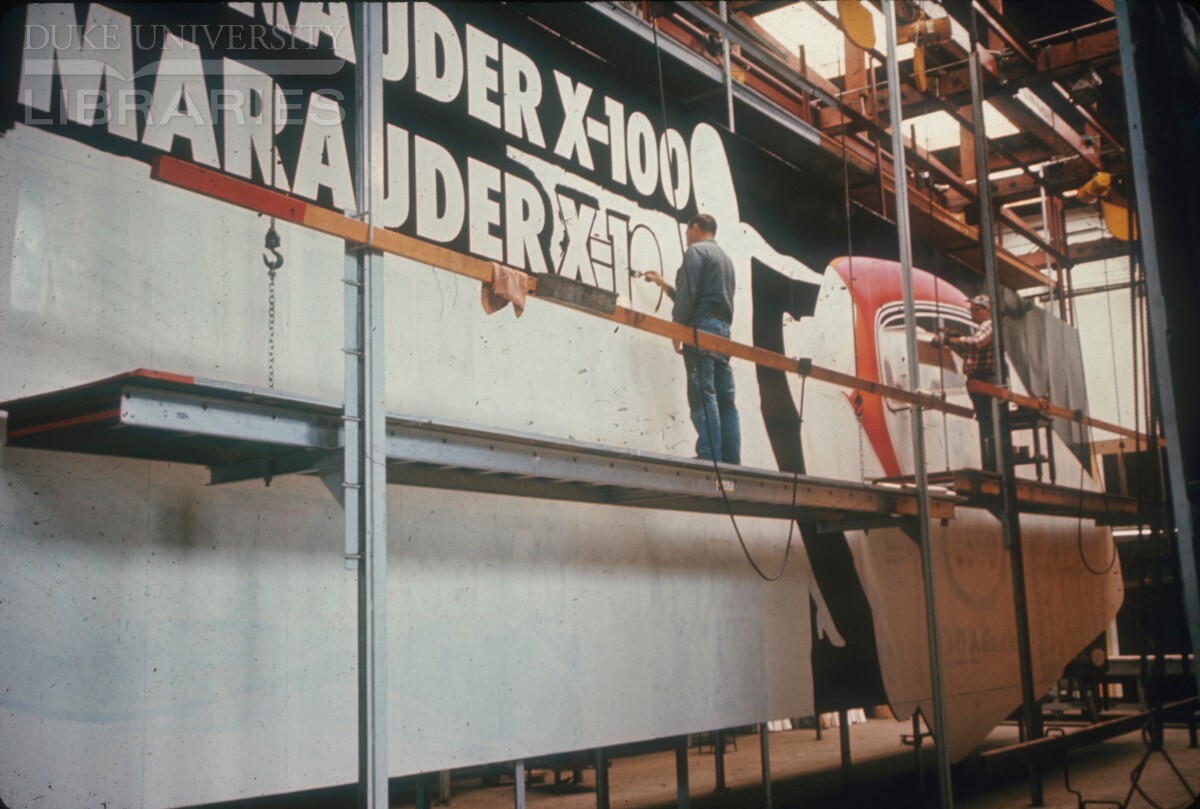
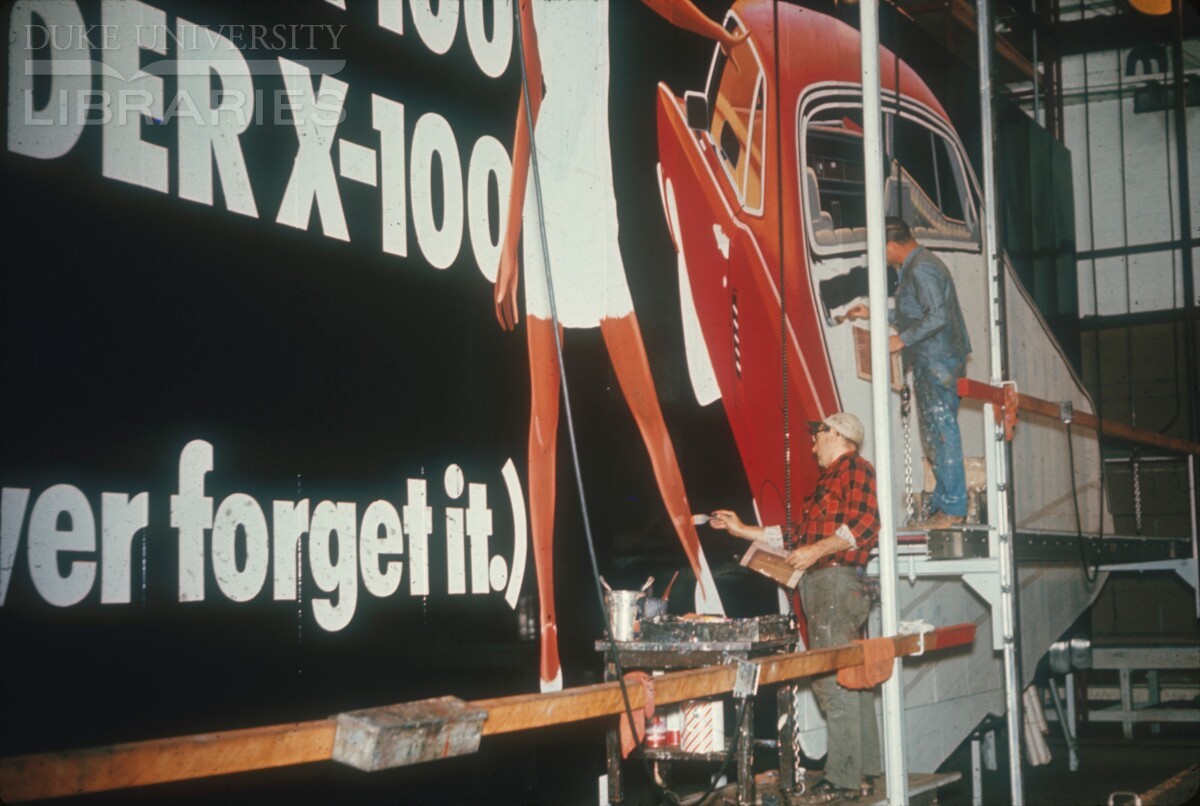 Here, an artist works from the design template and applies the final touches to a billboard while braving the rain.
Here, an artist works from the design template and applies the final touches to a billboard while braving the rain.
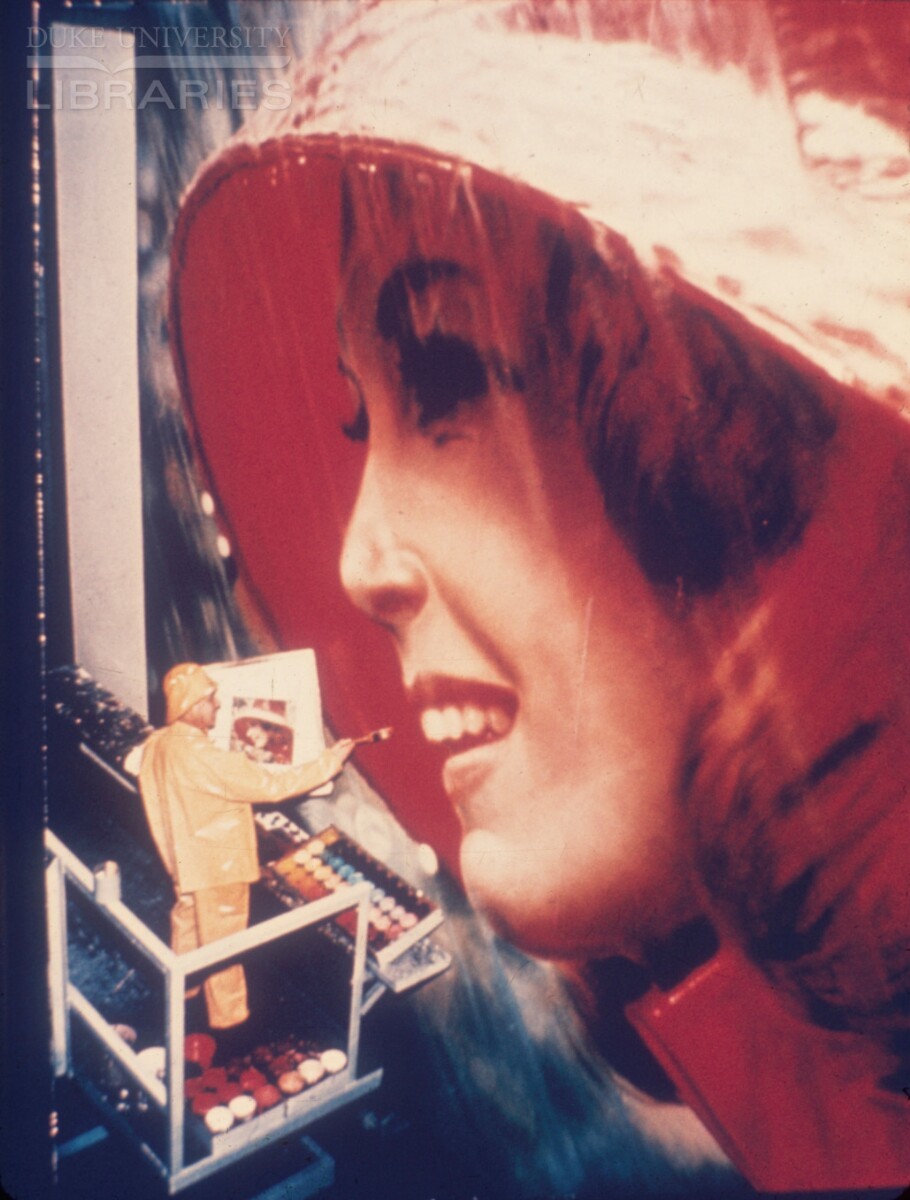 Billboard painters typically used oil-based paints because of their durability and vibrant colors. These paints frequently contained lead, which enhanced their opacity and longevity but posed significant and poorly understood health risks to the painters. Sign paint companies offered a limited palette, so painters had to mix colors to achieve the desired hues and ensure consistency across large areas. The final step involved adding fine details and touch-ups to produce an eye-catching design, readable from a distance. The result was a vibrant and durable advertisement that could withstand the elements and capture the attention of passersby.
Billboard painters typically used oil-based paints because of their durability and vibrant colors. These paints frequently contained lead, which enhanced their opacity and longevity but posed significant and poorly understood health risks to the painters. Sign paint companies offered a limited palette, so painters had to mix colors to achieve the desired hues and ensure consistency across large areas. The final step involved adding fine details and touch-ups to produce an eye-catching design, readable from a distance. The result was a vibrant and durable advertisement that could withstand the elements and capture the attention of passersby.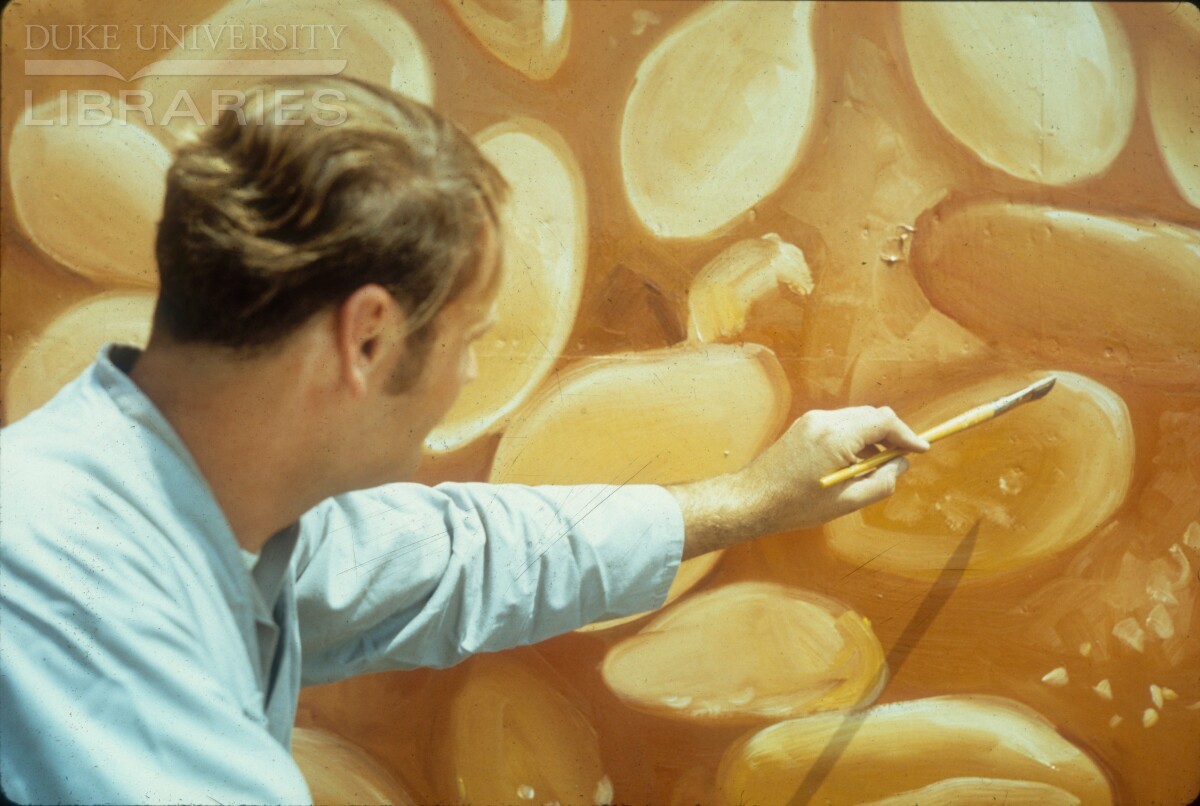
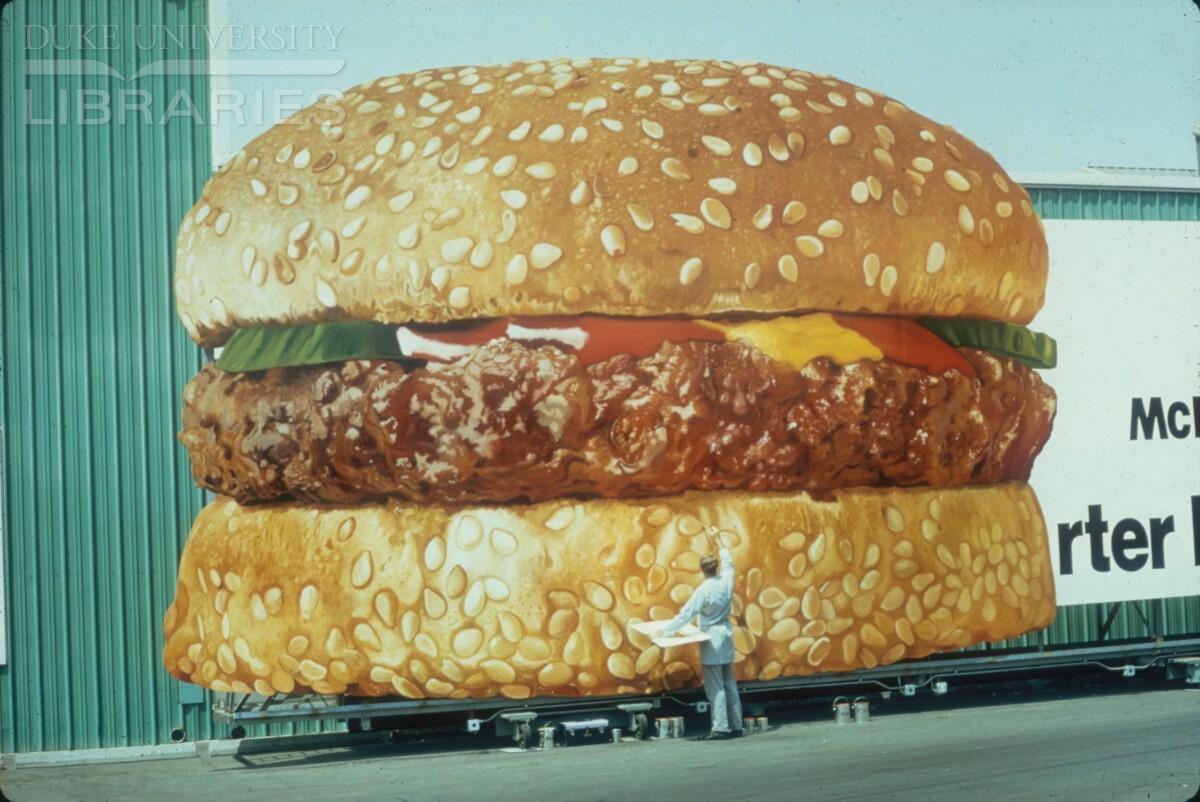 As technology advanced, the billboard industry saw significant changes. The introduction of lithography in the late 18th century allowed for mass-produced printed posters, which began to replace hand-painted billboards. By the mid-20th century, printed poster billboards became more common. Though they did not replace painted billboards, they offered a faster and more cost-effective way to produce large-scale advertisements. This shift began a new era in outdoor advertising, paving the way for the modern printed vinyl billboard displays we see today.
As technology advanced, the billboard industry saw significant changes. The introduction of lithography in the late 18th century allowed for mass-produced printed posters, which began to replace hand-painted billboards. By the mid-20th century, printed poster billboards became more common. Though they did not replace painted billboards, they offered a faster and more cost-effective way to produce large-scale advertisements. This shift began a new era in outdoor advertising, paving the way for the modern printed vinyl billboard displays we see today.
Images are from the Duke University Libraries Digital Collections.
If you are interested in advertising on one of our billboards call us at 800-221-4114 or email us at meadow@meadowoutdoor.com!
